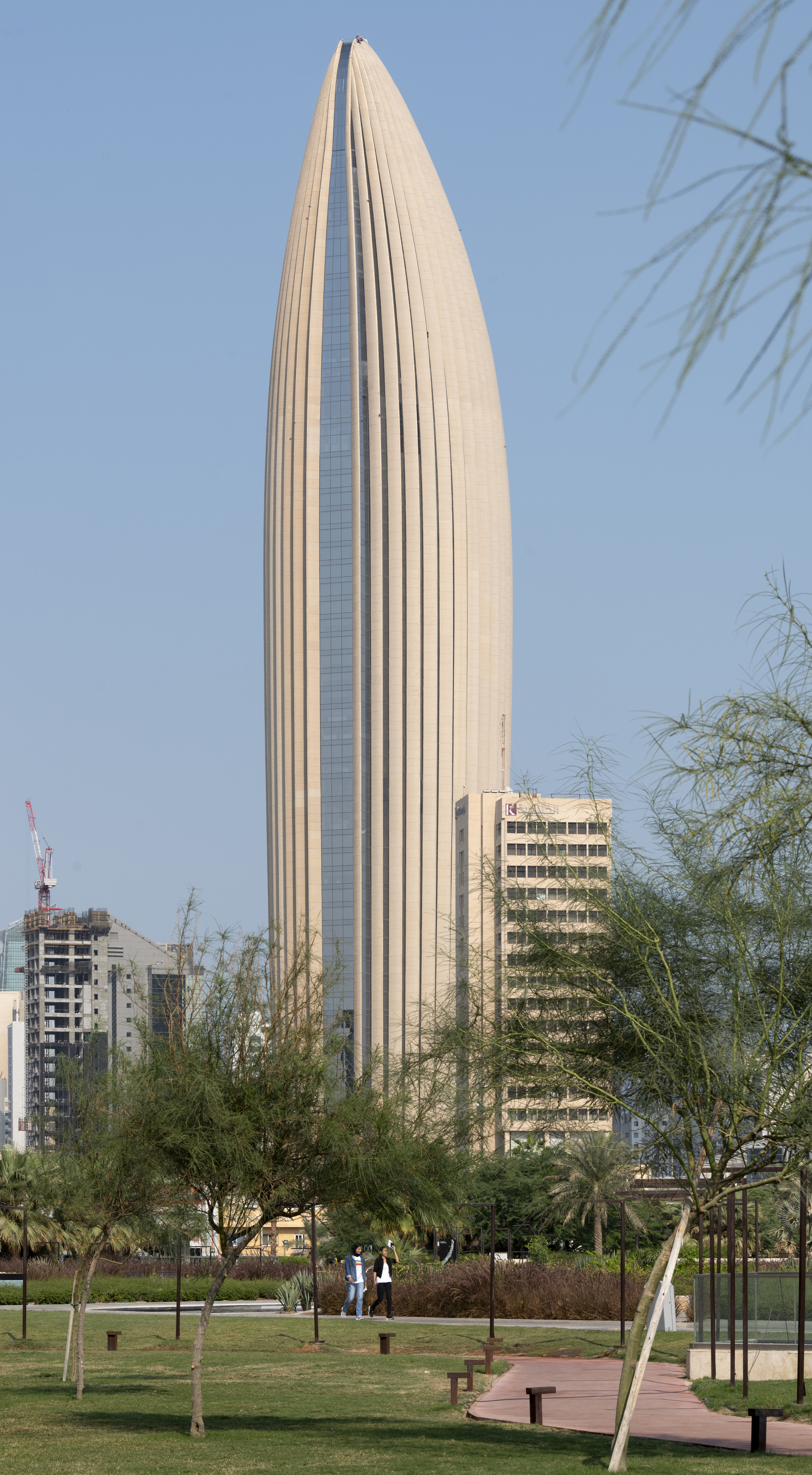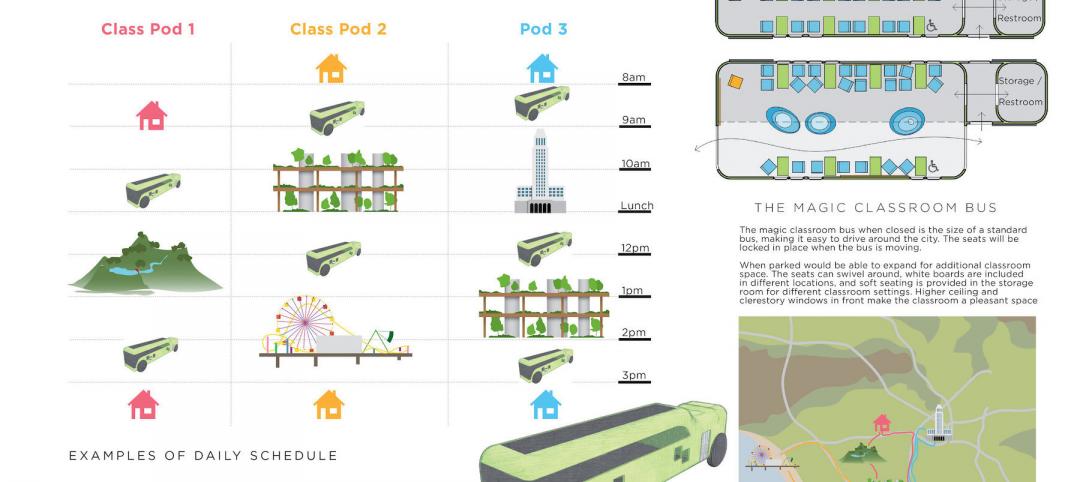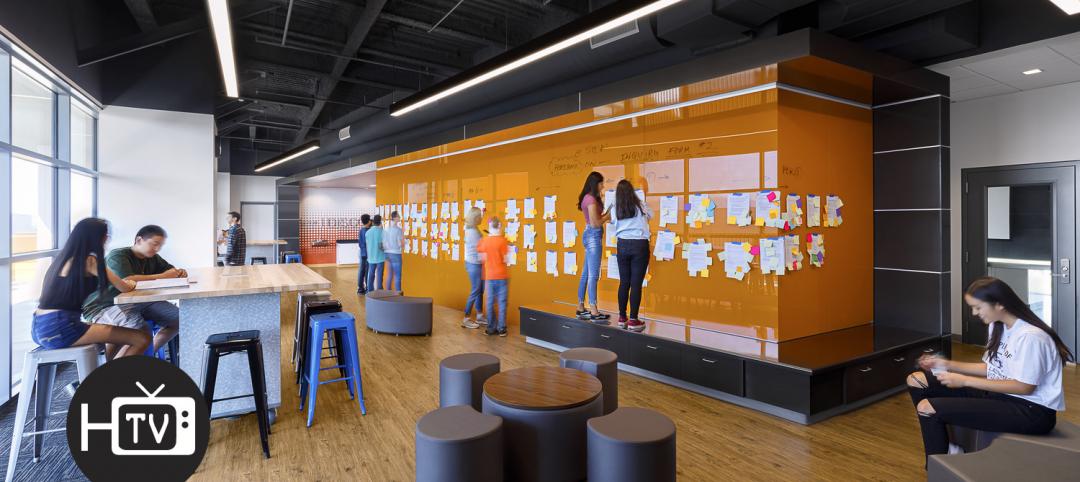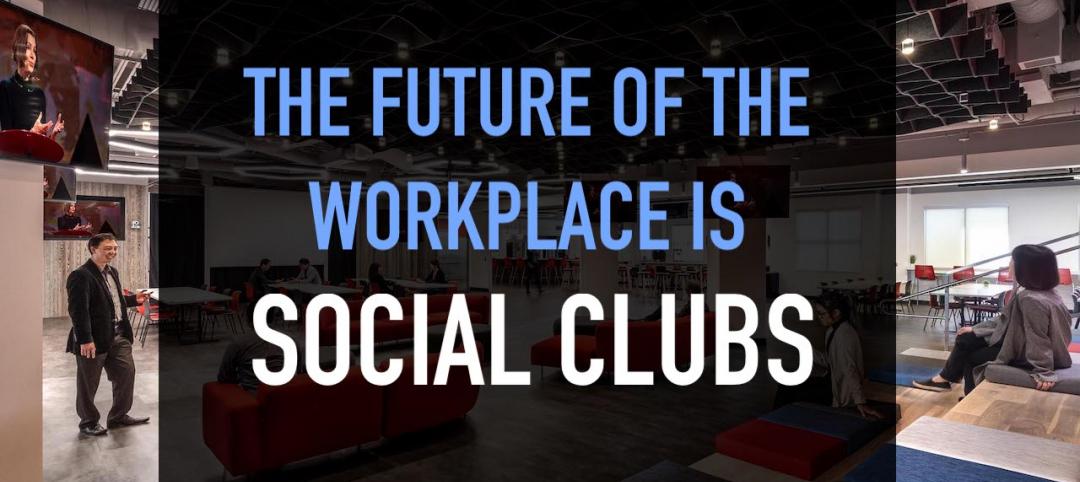When the National Bank of Kuwait first conceived its new headquarters more than a decade ago, it wanted to make a statement about passive design with a soaring tower that could withstand the extreme heat of Kuwait City, the country’s desert capital.
Details about and images of this 300-meter-high, 127,000-sm headquarters, whose construction was completed in August 2020 within Kuwait City’s Sharq financial district, were made public last summer. The challenges for its Building team—which included the architect Foster + Partners, the engineering firm Buro Happold, and general contractor SSH—were to actualize an ambitious concept that called for a full-glazed view of the city and Persian Gulf from the tower’s north façade, while providing the building with sufficient lateral stability and shading from the blazing sun.
The resulting 63-story tower resembles a “squashed kidney bean,” quips Daniel Knott, Buro Happold’s Associate Director of Sustainability and Physics in London, who was involved in this project practically from the start.
Fortifying the structural core of the National Bank of Kuwait tower
Knott spoke with BD+C about this project in early February. He explained that its convex architectural form, on the tower’s north side, made it necessary to position its extruded structural core on the south side. But by doing so, the structural core, as initially drawn up, would not have provided the building with the lateral stiffness it needed.
The building team’s solution was to combine reinforced concrete core walls that extend throughout the height of the tower with steel outrigger trusses located at the building’s four service levels.
That solution also called for the installation of reinforced concrete structural fin columns that shade the building’s glass façade, reducing peak solar gain by 20% and annual solar gain by 25%, according to George Kerilis, a Project Principal with Buro Happold and the structural lead on the bank tower project.
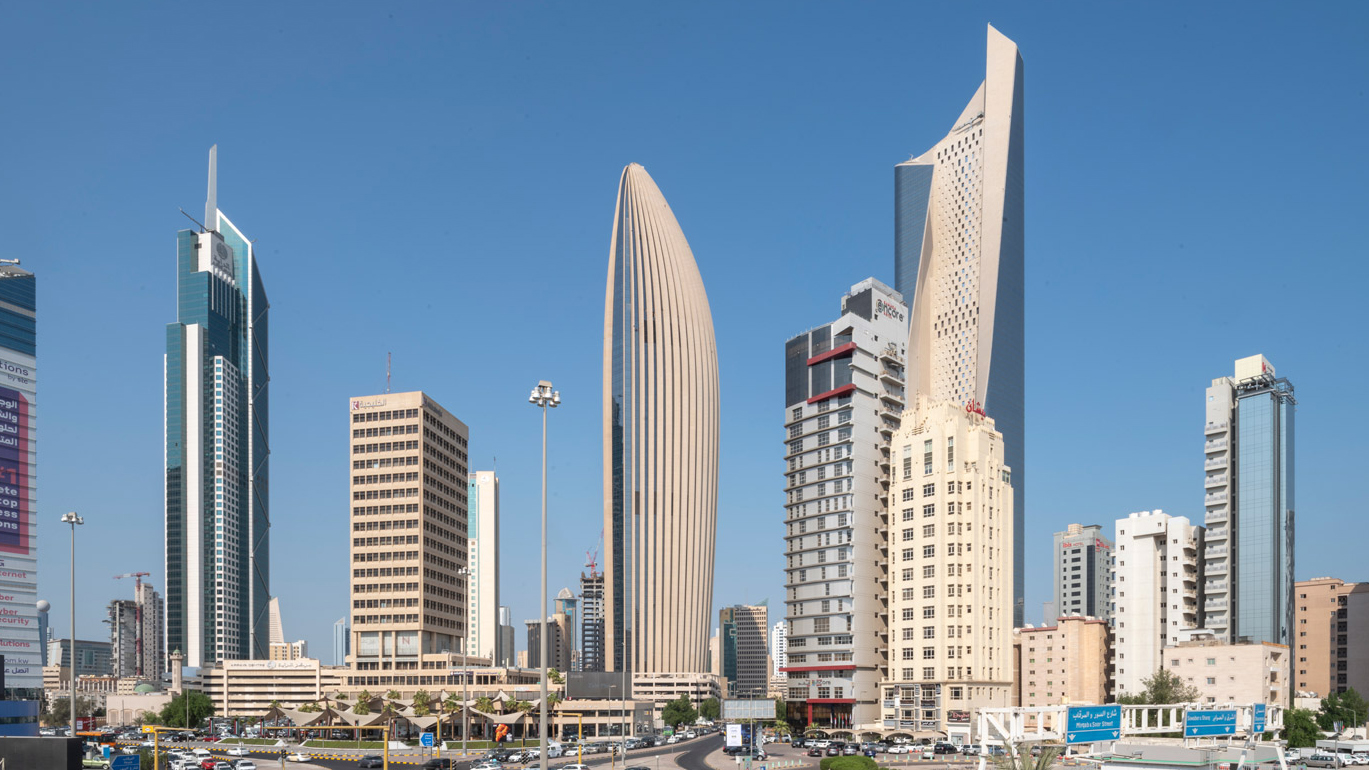
In an email to BD+C, Kerilis explained that the fins were attached to the building by cantilever stubs that extend from each column at every glazing level. Knott said that, at one point, the bank wanted the fins pointing south, but the project team convinced its client that pointing them north would help the project meet its budgetary criteria and achieve LEED Gold certification. (Knott also recalled that the design once called for horizontal fins; making them vertical was an aesthetic choice.)
Knott acknowledged other shading methods that have been tried on different buildings. But the large fins “set a precedent.”
A number of firsts for this skyscraper
Through what Knott said was “constant analysis” of the building’s design, which included parametric modeling of the exterior, the building team realized that there would be times during the day when sunlight avoids the fins. That’s where the building’s shape, glazing, and fritted glass come into play to help control the tower’s energy consumption. “This was an interesting technical challenge” with frit performance and heat absorption, said Knott.
By tapering the building toward its base, the design maximizes floor space on the upper levels, and promotes self shading because the overhanging floor plates shelter the floors below. The tapering required each floor to be modeled individually, according to Buro Happold.
The National Bank of Kuwait headquarters, which according to SSH cost $433.2 million to build, achieved other firsts for this market, according to the building team and reporting by New Building Materials & Construction World Infra Construction and Equipment Magazine. The tower is serviced by a twin elevator system, with a set of elevator cabins operating independently in each of the 10 reinforced concrete shafts. The tower also has the world’s largest building maintenance unit, taking up two floors and located about 250 meters above sea level. The building’s chillers were adapted to handle peak energy loads, says Knott.
Crowning the tower is a striking, extreme-curved stick system glazing consisting of 199 glass panels.
Foster + Partners, which also provided the interior design, singles out among the tower’s flourishes its 18-meter-high lobby at the base of the building, along with “sky lobbies” at different levels. There’s a double-height restaurant at level 18, a state-of-the-art gym on level 19, and a ballroom and 140-seat auditorium on level 38.
The tower is replete with bespoke furniture and lighting, most notably in its triple-height boardroom on the 48th level that is distinguished by blown-glass pendants and a 13-meter-long board table.
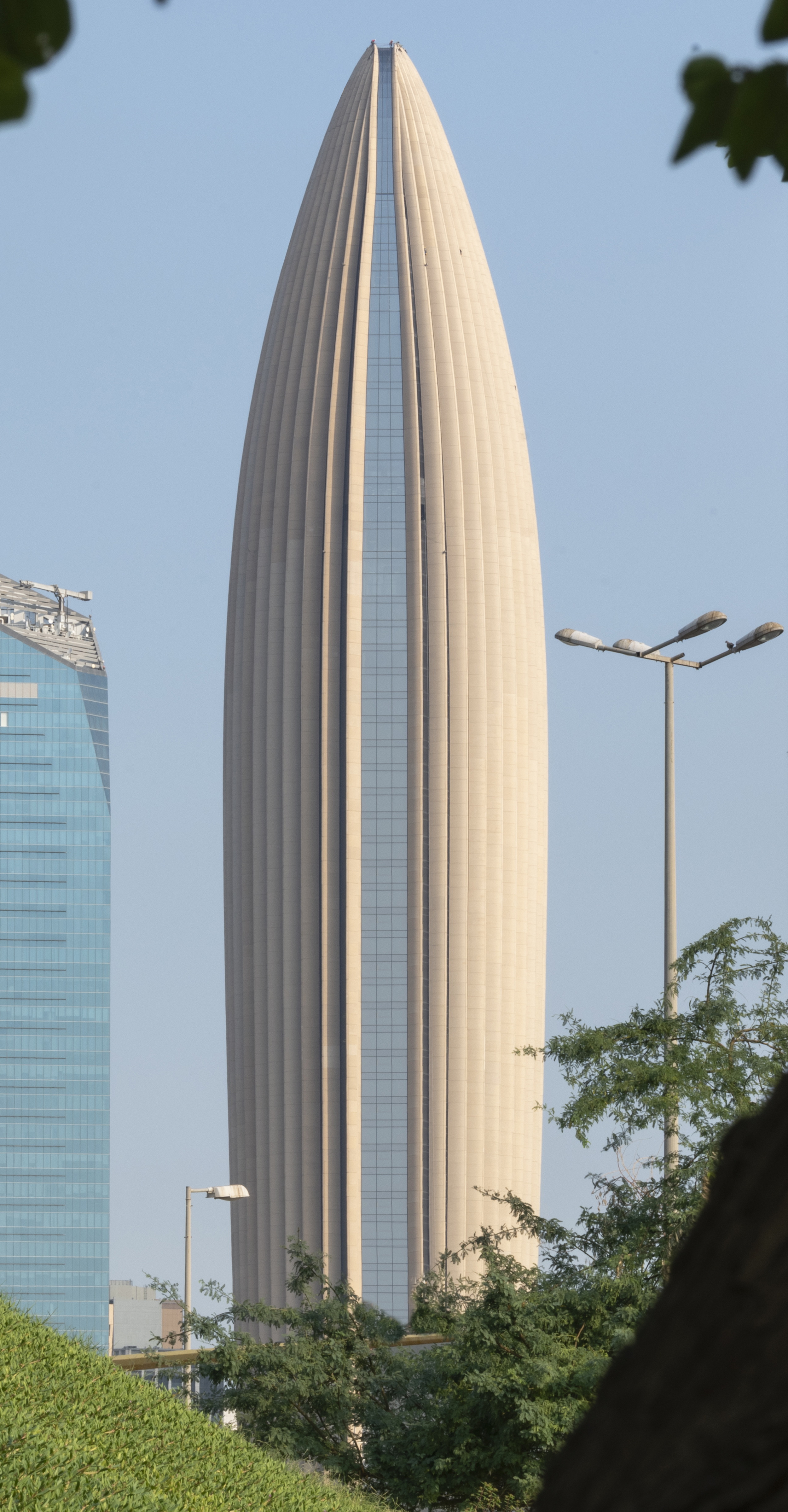
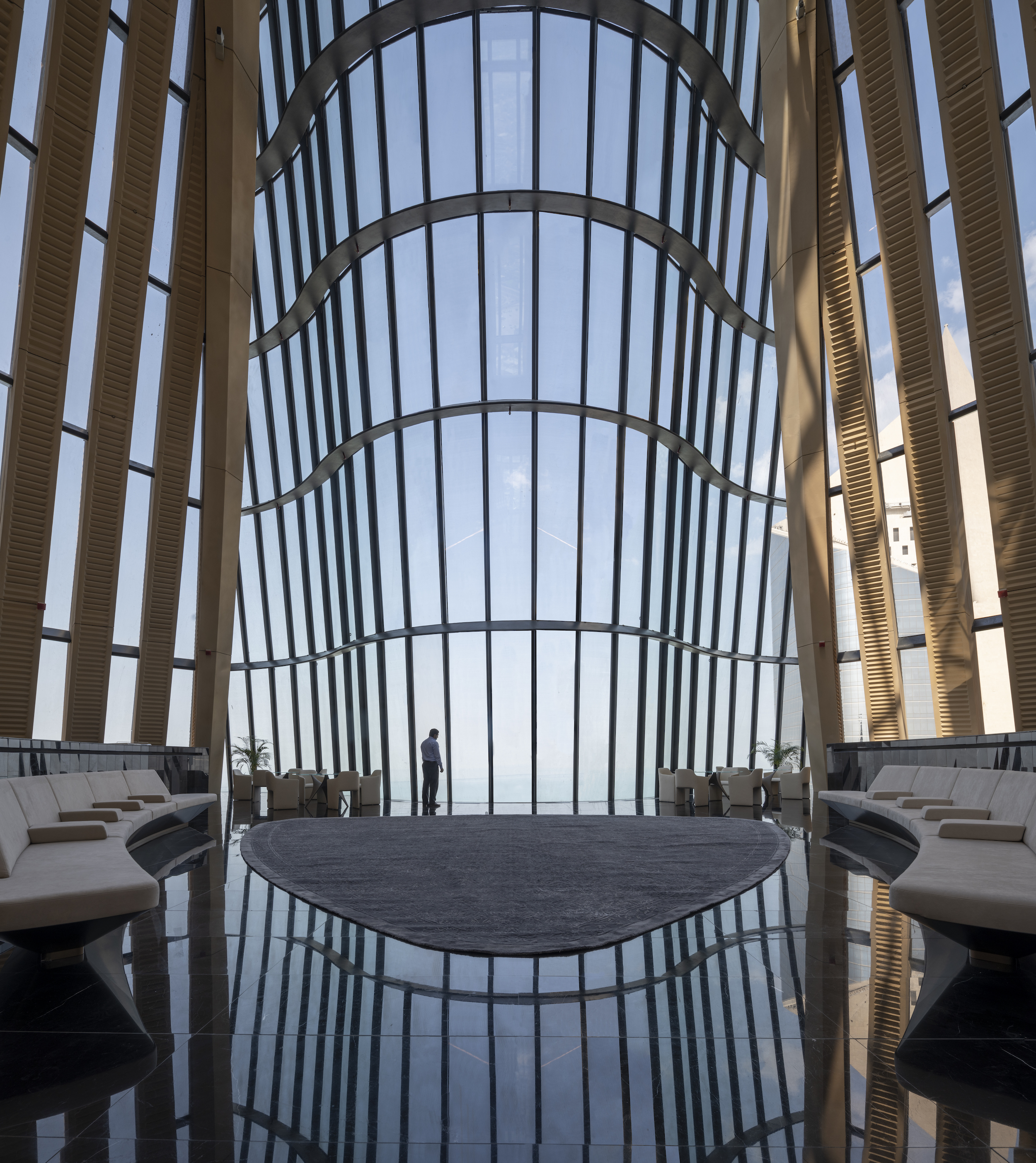
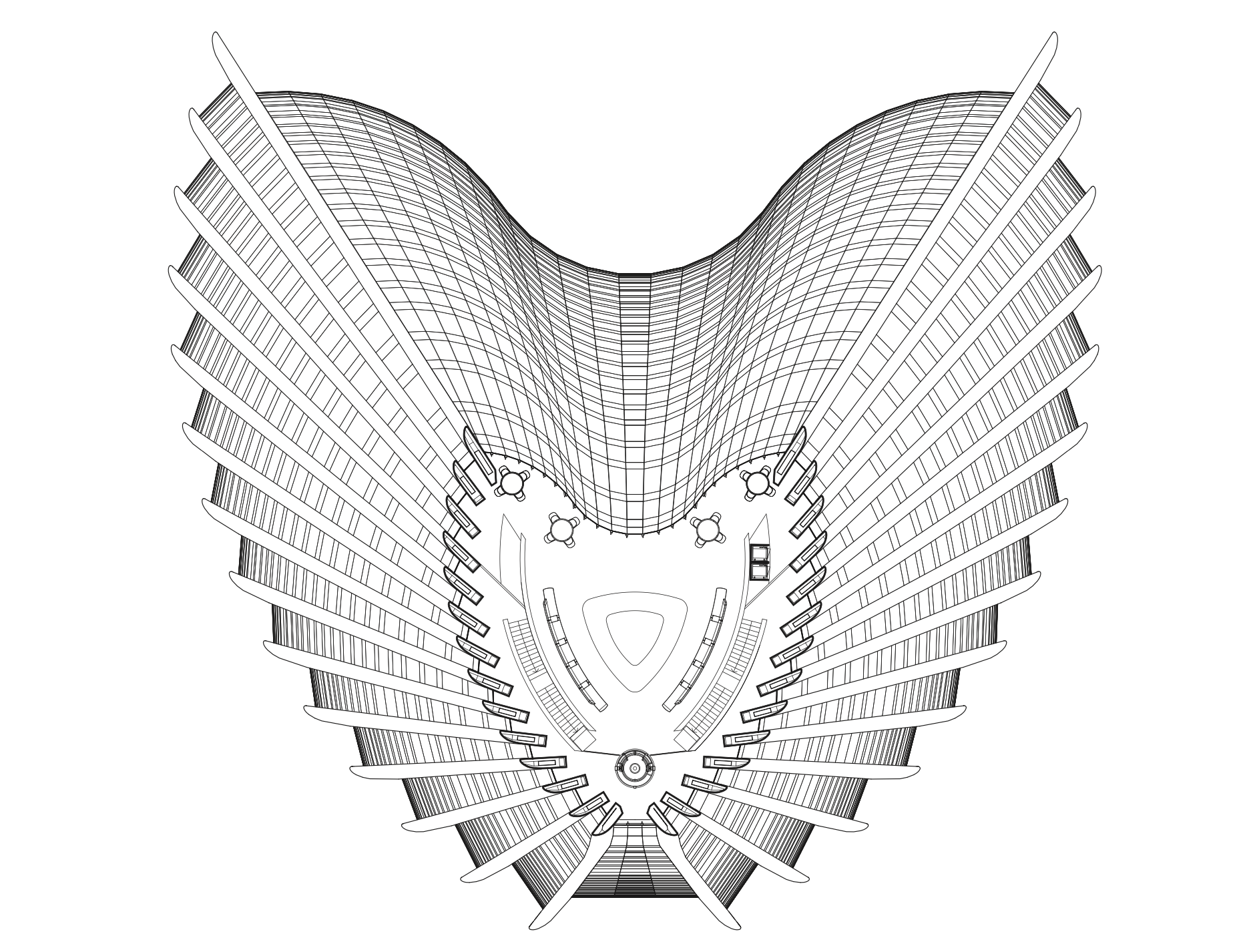
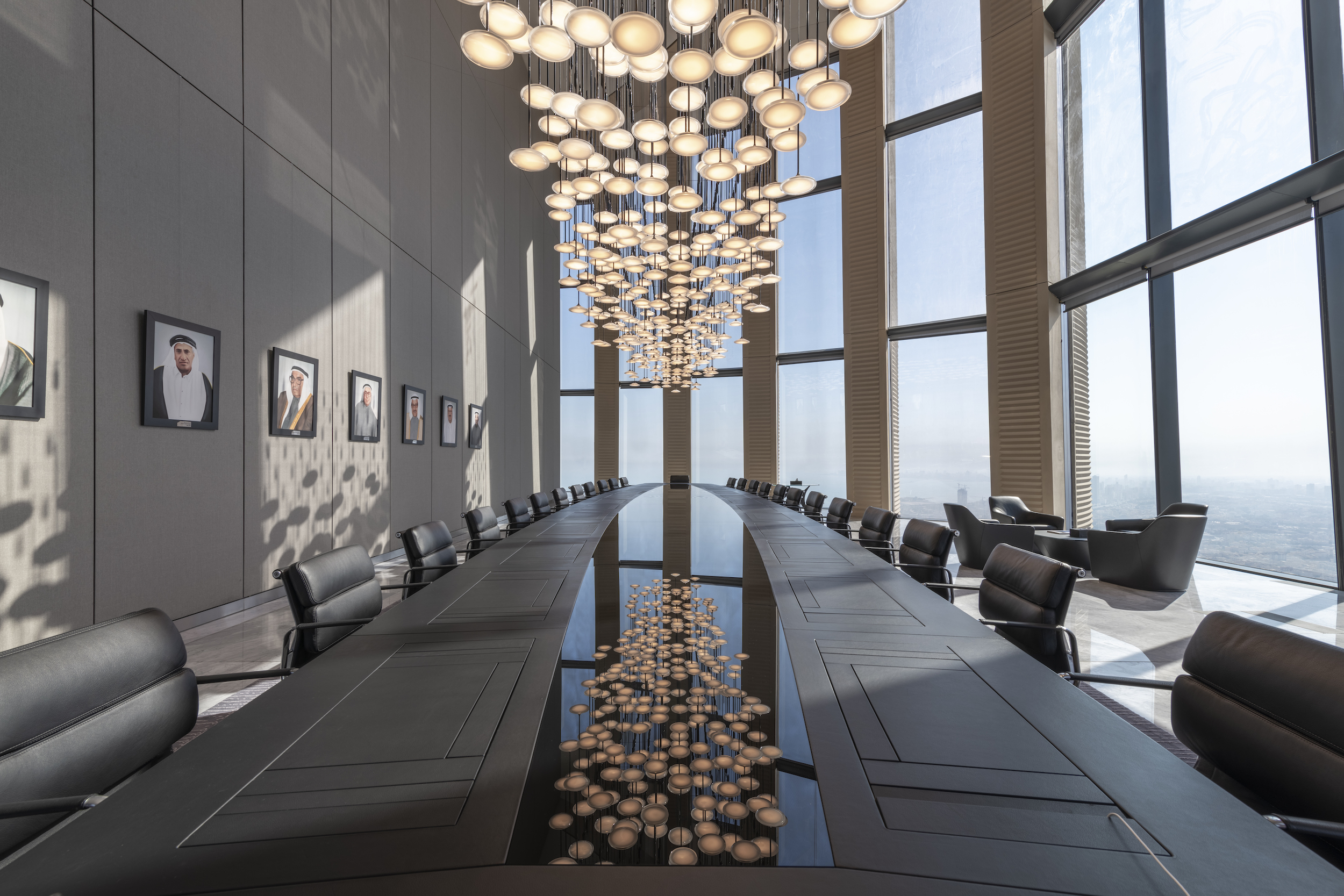
Related Stories
K-12 Schools | Nov 10, 2021
K-12 school design innovation: 'Learning Everywhere' and the mobile classroom
Last September, AIA San Francisco awarded the Professional Category in its 2021 Future Classroom Competition to a five-person team from Culver City, Calif.-based Berliner Architects. The firm was selected for its “Learning Everywhere” idea that features a mobile strategy for education at school, home, on field trips, and in transit. BD+C's John Caulfield discuss that concept with Richard Berliner, AIA, Principal, Berliner Architects.
Architects | Nov 9, 2021
Download BD+C’s 2021 Design Innovation Report
AEC and development firms share where new ideas come from, and what makes them click.
Glass and Glazing | Sep 30, 2021
Plans move forward on Central Place Sydney, duel towers with an AI-driven façade system
SOM and Fender Katsalidis are designing the project.
Sports and Recreational Facilities | Aug 25, 2021
The rise of entertainment districts and the inside-out stadium
Fiserv Forum, home to the 2021 NBA Champion Milwaukee Bucks, proved that the design of the space outside a stadium is just as important as inside.
Wood | Jul 16, 2021
The future of mass timber construction, with Swinerton's Timberlab
In this exclusive for HorizonTV, BD+C's John Caulfield sat down with three Timberlab leaders to discuss the launch of the firm and what factors will lead to greater mass timber demand.
K-12 Schools | Jul 9, 2021
LPA Architects' STEM high school post-occupancy evaluation
LPA Architects conducted a post-occupancy evaluation, or POE, of the eSTEM Academy, a new high school specializing in health/medical and design/engineering Career Technical Education, in Eastvale, Calif. The POE helped LPA, the Riverside County Office of Education, and the Corona-Norco Unified School District gain a better understanding of which design innovations—such as movable walls, flex furniture, collaborative spaces, indoor-outdoor activity areas, and a student union—enhanced the education program, and how well students and teachers used these innovations.
Multifamily Housing | Jun 30, 2021
A post-pandemic ‘new normal’ for apartment buildings
Grimm + Parker’s vision foresees buildings with rentable offices and refrigerated package storage.
Office Buildings | Jun 10, 2021
The future of the workplace is social clubs
Office design experts from NELSON Worldwide propose a new concept for the workplace, one that resembles the social clubs of the past.
Digital Twin | May 24, 2021
Digital twin’s value propositions for the built environment, explained
Ernst & Young’s white paper makes its cases for the technology’s myriad benefits.
Wood | May 14, 2021
What's next for mass timber design?
An architect who has worked on some of the nation's largest and most significant mass timber construction projects shares his thoughts on the latest design trends and innovations in mass timber.


